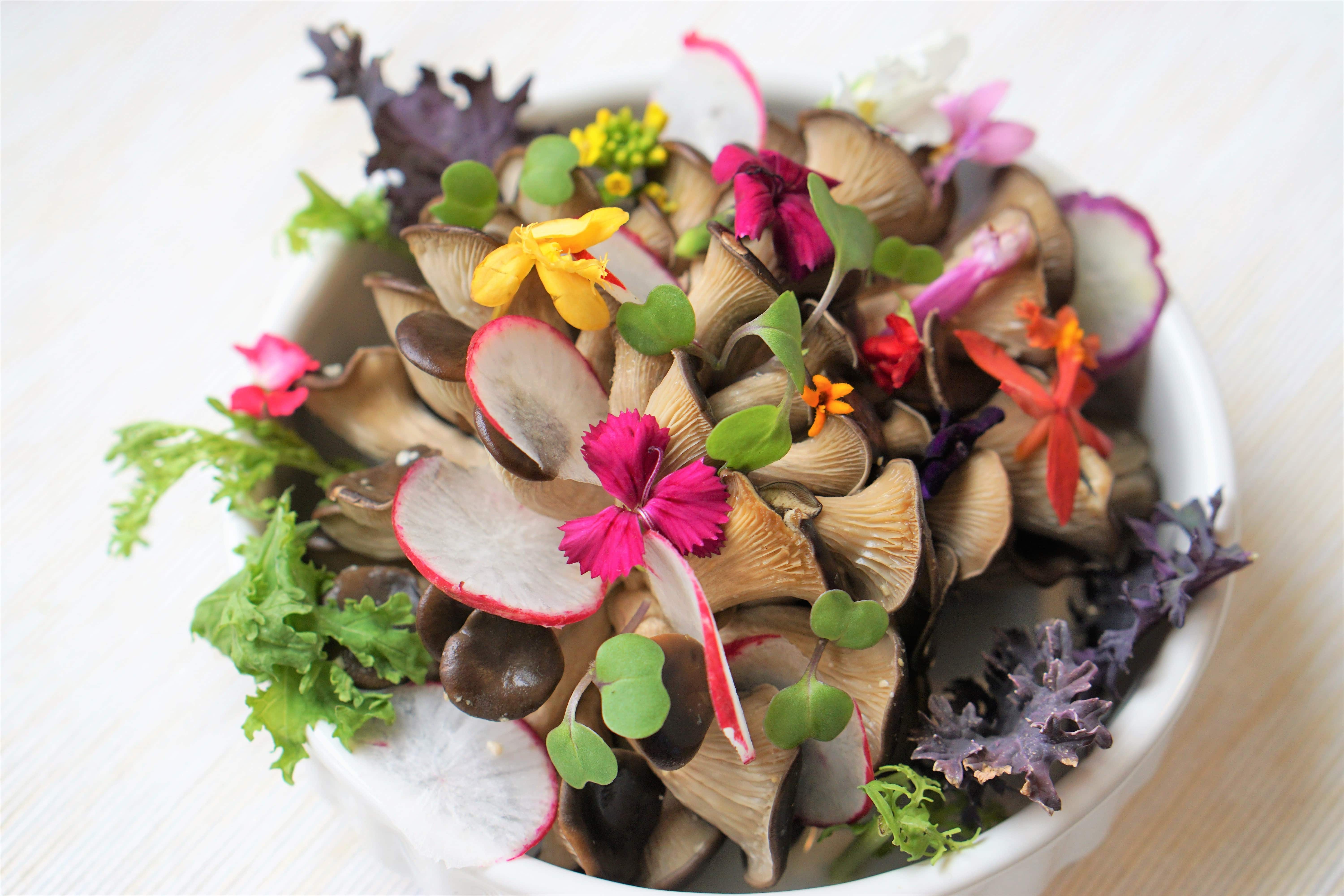
You may have noticed that microgreens have become some of the most beloved garnishes at fine dining, and it's easy to see why top chefs can't get enough of them. The delicate plants not only offer visual appeal, but are also full of intense flavors.
Now, the tiny leaves are showing up at farmers' markets and in the produce aisles of supermarkets, which may have you wondering if it's worth the splurge. After all, don't athletes need more vegetables as a way to get all the nutrition they need for better health and performance? Or are microgreens just another hype food fad that will do little more than put a dent in your wallet?
What is a biosimilar
This is a marketing term for vegetables and herbs that have not yet matured: the middle ground between sprouts and tender greens. That said, they are not to be confused with buds, which are leafless. Sprouts also have a much shorter growth cycle of 2-7 days, while microgreens are generally harvested 7-21 days after germination, once the first true leaves of the plant have emerged.
Microgreens are more similar to baby greens, in that they only its stems and leaves are considered edible. Unlike baby greens, however, they are much smaller and can be sold before harvest. This means that the plants can be purchased whole and cut at home, keeping them alive until consumed.
For example, these include foods like radishes, kale, and broccoli that are a long way from reaching maturity, but are instead in the sprouting stage where they have two unfurled seed blades called cotyledons. (By contrast, sprouts are germinated seeds that have cracked and sent out what look like white tails.)
Microgreens are harvested above the soil line when the plant is no taller than 5 centimeters, which takes one to three weeks from sowing the seeds. As small as they are, these young plants provide intense flavors, vibrant colors, and unique textures.
Radish and mustard micros add a touch of fire; the arugula will awaken the taste buds with a spicy touch; and the pea sprouts taste like the freshest peas imaginable.
PREMIUM QUALITY
Microgreens can be grown from many different types of seeds. The most popular varieties are produced from seeds of the following plant families:
- Brassicaceae: Cauliflower, broccoli, cabbage, watercress, radish, and arugula
- Asteraceae: lettuce, endive, radicchio and radicchio
- Apiaceae: Dill, carrot, fennel and celery
- Amaryllidaceae: garlic, onion, leek
- Amaranthaceae: Amaranth, quinoa, chard, beetroot and spinach.
- Cucurbits: melon, cucumber and pumpkin
Cereals such as rice, oats, wheat, maize, and barley, as well as legumes such as chickpeas, beans, and lentils, are also sometimes grown as microgreens. Microgreens vary in flavor, which can range from neutral to spicy, slightly tart, or even bitter, depending on the variety. In general, its flavor is considered strong and concentrated.

Nutritional values
Nutritionally they show that good things can come in small packages. Science suggests that the youngest leaves of plants may have higher levels of certain vitamins and antioxidants than more mature plants.
Research by the US Department of Agriculture found that gram for gram, microgreens like coriander and amaranth may be more concentrated in important nutrients such as vitamin C, beta-carotene and vitamin K than their adult versions. So the red cabbage version could give you a bigger shot of vitamin C, a nutrient that's essential for heart health.
Tiny nutrient-packed broccoli florets are packed with sulforaphane, a potent cancer-fighting compound. (When you chew broccoli sprouts, you activate an enzyme called myrosinase that converts the compound glucoraphanin in broccoli sprouts to sulforaphane.) In addition, they contain a noticeable amount of dietary fiber to help you feel more satiety and improve your microbiome.
Nutrient and antioxidant levels can vary greatly among microgreens (growing, harvesting, and handling conditions can have a considerable impact on nutrient content), so it may be a good idea to include a few different varieties in your diet to get a greater variety of nutrition.
Still, you shouldn't trade in your fully grown heads of broccoli for a shopping cart full of microgreens. For most people, it would be difficult (and very expensive if you're not growing your own) to get all the plant-based nutrition, since serving sizes tend to be smaller and shelf lives shorter.

Advantages
Eating vegetables is linked to a lower risk of many diseases. This is likely thanks to the high amounts of vitamins, minerals, and beneficial plant compounds they contain. Microgreens contain similar, if not higher, amounts of these nutrients than mature greens. As such, they can similarly reduce the risk of the following diseases:
- Heart disease: Microgreens are a rich source of polyphenols, a class of antioxidants linked to a lower risk of heart disease. They can also lower levels of triglycerides and "bad" LDL cholesterol.
- Alzheimer's disease: Foods rich in antioxidants, including those containing high amounts of polyphenols, may be linked to a lower risk of Alzheimer's disease.
- Diabetes: Antioxidants can help reduce the type of stress that can prevent sugar from properly entering cells. In laboratory studies, fenugreek microgreens appeared to improve cellular sugar uptake by between 25% and 44%.
- Certain types of cancer: Fruits and vegetables rich in antioxidants, especially those rich in polyphenols, may reduce the risk of several types of cancer. Polyphenol-rich microgreens can be expected to have similar effects.
Although this looks promising, it should be noted that the number of studies directly measuring the effect of microgreens on these medical conditions is limited, and none could be found in humans. Therefore, more studies are needed before solid conclusions can be drawn.
How to add them to the diet?
Results of a study in the Journal of Food Science suggest that many consumers are intrigued by the flavors and appearance of microgreens and may be willing to include them more often in their meals. Fortunately, the versatile sprouts can be eaten in a variety of ways. We recommend you try them on sandwiches, wraps and salads.
They also look great in rolls of sushi homemade and how Garrison on a veggie burger or in a bowl of whole grains. They can also cheer tacos, grilled cheese, avocado toast, tortilla and scrambled eggs.

Where to buy them?
Expanding beyond alfalfa, microgreens ranging from radish to amaranth are becoming more widely available in health food stores, farmers markets, and even some supermarkets. Choose those with edgy-looking greens, a sign that they were recently picked and have maximum flavor and nutrition. They must also have a fresh smell no pungent odor. Definitely avoid those that are viscous, which could be a sign of bacterial growth.
Compared to regular vegetables, they can be surprisingly expensive based on weight. You can likely buy a whole cabbage for the same price as a small bunch of the high-priced micro version. (They can be cheaper if purchased from a local vendor at a farmers market.)
However, you can easily farm a year-round grow of microgreens in your own kitchen, which will burn a much smaller hole in your wallet; It's about the easiest garden project there is, no green thumb required. It's also a great family project, as there is some evidence that growing vegetables can help children eat more of them and enjoy a more varied diet.
For a one-inch garden, all you need are seeds, soil, and a few containers (plastic containers that hold strawberries and baby spinach work perfectly).